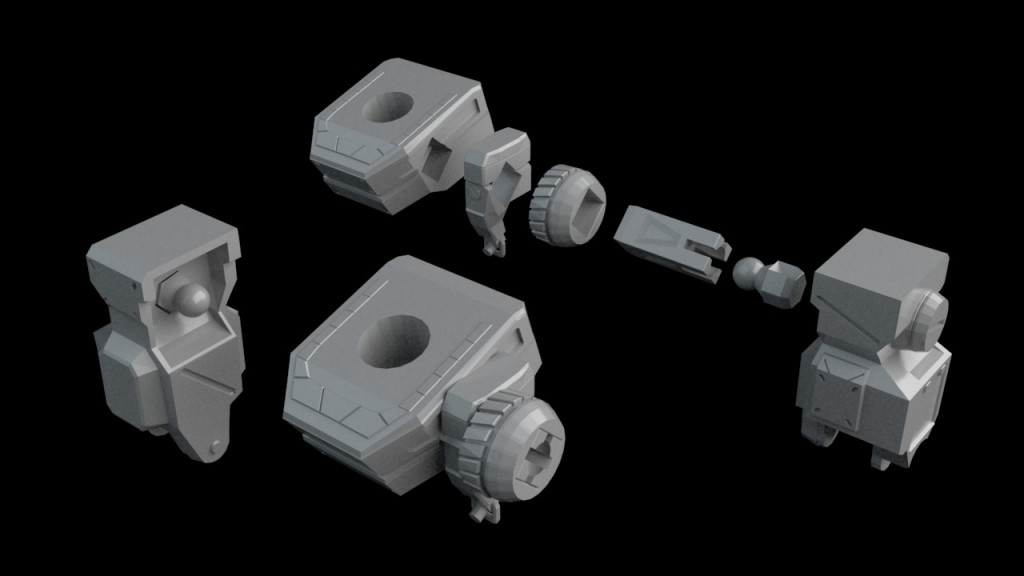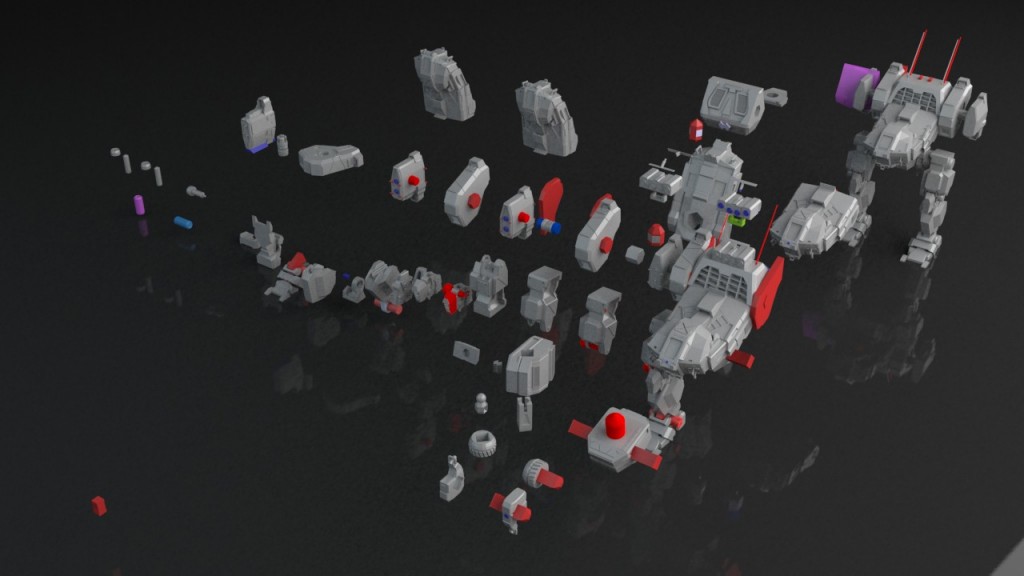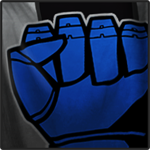 kiriage, on 04 October 2013 - 01:30 AM, said:
kiriage, on 04 October 2013 - 01:30 AM, said:
Your 3d prints really are awesome Valcrow, I'm beginning to appreciate the amount of work that goes into doing one of these, if I can get a result half as good as these I'll be very happy. Was wondering if you had any suggestions you could share for the space to leave around the pins in the moveable components where they join other sections ie: that the joint is not too loose or too tight?
There is a ton of things to consider when designing the joints. I think the biggest consideration is what printing you're printing on. If it's a super precise one, you can afford to design your joints a little bit tighter. For my printer, there are a lot of variables like it's accuracy at different orientations, overhangs that would interfere with a slotted joint. etc.
For this reason I design in features in the joints that help me assemble. Here's a Sarah Jenner joint solution I'm particularly fond of.

Because of the crazy shape, I had to print all these parts separately. To ensure their proper orientation, I made the peg a square. (with cut holes on in to lessen the friction) The round jaggedy block with a square in it actually acts as a friction holder to clamp down on the balljoint. without it it pops off it's socket easily. I also separated the balljoint from the leg part because of an orientation conflict. if you look closely at the ball with hexagon piece. there's a little indent in it. That's because on the opposing part, that side has an overhang which causes tolerance issues. Everything has a purpose.
Best part is once it's all hammered together, everything is seamless, holds with only friction and shows no signs that any of this even exists. Makes you feel warm and fuzzy inside.
Of course, round pins work just as well once you figure out the printers properties. Just add a little lip and it'll click into place. (big round center hole on the pelvis block.
Here's what my 3D file usually ends up looking like.

I'm not sure if that helps you or just kinda makes it more daunting... but if it's your printer, do a bunch of tests. if it's shapeways or other, I think their tolerances are very accurate. you can always sand it down a tiny bit if it's too tight, but can't add friction usually...
 Liam Intaki, on 12 August 2013 - 12:23 PM, said:
Liam Intaki, on 12 August 2013 - 12:23 PM, said:































